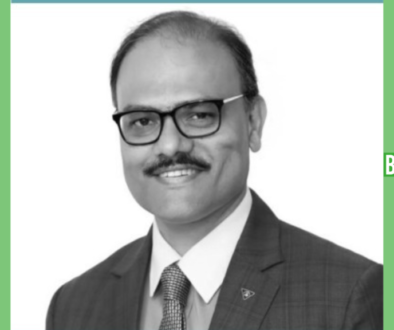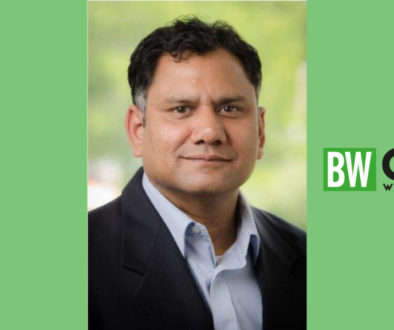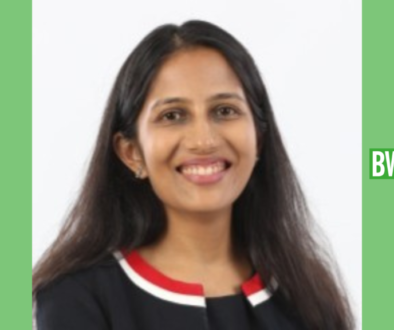Optimizing Your Taxes With New-Age Employee Benefits
By: Prashant Maheshwari, CFO, Sodexo BRS India
When it comes to optimizing taxes and post-tax returns, the Finance Act – an annually enacted fiscal legislation, plays a critical role. Learning about it is essential as it includes new provisions, exemptions, and reliefs pertaining to your income taxes. The Government of India introduced a two-tax regime under the Finance Act 2020, giving taxpayers the option of choosing between two different regimes.
Companies invest a lot of time and energy to plan benefits to help attract and retain the best talent. With this, paying due attention to optimizing taxes becomes of utmost importance. An understanding of personal income tax can help you in making pragmatic decisions regarding tax management.
When it comes to optimizing taxes and post-tax returns, the Finance Act – an annually enacted fiscal legislation, plays a critical role. Learning about it is essential as it includes new provisions, exemptions, and reliefs pertaining to your income taxes. The Government of India introduced a two-tax regime under the Finance Act 2020, giving taxpayers the option of choosing between two different regimes.
Below are the fundamental differences in the existing tax regime with deductions and exemptions and the new tax regime without deductions and exemptions but with lower slab rates.
The New Tax Regime
The government introduced three new tax slabs in the new regime. The income shall be computed without any exemptions or deductions for allowance or perquisites by whatever name called, provided under any other law for the time being in force. The new tax regime comes with its own merits and demerits. Firstly, if you go for this regime, you would not be allowed to claim exemptions like House Rent Allowance, Leave Travel Allowance, and tax-saving investment deductions, among others. In addition, the new regime prohibits standard deductions of ₹50,000, Professional Tax, Housing Loan Interest, Life & Health insurance premium, savings account interest etc. Secondly, you can decide how you want to save your money as now you do not have to rush for tax-saving insurances or park your money in avenues that are not aligned with your financial goals.
The Old Tax Regime
The discussion of deductions and exemptions takes you to the old or current tax regime! While the tax rates are higher, there are many ways to reduce your tax liability under this regime. Over the years, the government has given around 70+ exemptions and deductions through which taxable income can be lowered.
The Comparison
Other than the deductions and exemptions, one significant difference in both the regimes is their tax slabs and the revised income tax rates. According to the ‘New Income Tax Regime’, the revised rates are:
Zero tax up to ₹2.5 lakhs
5% tax between ₹2.5 lakh and ₹5 lakhs.
10% tax between ₹5 lakhs and ₹7.5 lakhs.
15% tax between ₹7.5 lakhs and ₹10 lakhs.
20% tax between ₹10 lakhs to ₹12.5 lakhs.
25% tax between ₹12.5 lakhs to ₹15 lakhs.
On the other hand, the old tax regime contained only three tax slabs at 5% between ₹2.5 lakhs to ₹5 lakhs, 20% between ₹5 lakhs to ₹10 lakhs, and 30% between ₹10 lakhs to ₹15 lakhs of the annual income.
Please note, that tax rates remain @ 30% for income beyond 15 Lakhs & also Surcharge & Cess remains unchanged in both the regime.
Working on The Switch
If you are a salaried employee, you have the option to select both regimes each financial year at the time of filing your ITR. But in the case of self-employment, you do not have the option to return to the old tax regime once you opt for the new one.
Though deciding whether to choose the Old or the New Tax Regime might seem complicated, it is not that difficult to figure out if you approach it systematically. All you must do is:
Understand what suits you best.
Check the exemptions.
Do the math to know the total income tax under both regimes.
Go beyond the numbers and understand how it impacts your lifestyle and financial goals.
Remember to plan well.
Optimizing Taxes as An Employee
The ones who choose the old regime can save taxes in multiple ways:
Investing in the Public Provident Fund
PPF, a tax saving option, provides a tax-free return on investments. In addition, PPF empowers you to plan to create a corpus for retirement and earn guaranteed returns.
Opting for the National Pension Scheme
NPS is now a well-settled scheme and a promising avenue for those who cross the ₹1.50 lac threshold under Sec 80C, where one can avail of an additional deduction of ₹50,000.
House Rent Allowance
HRA is a beneficial tax allowance if you live in a rented house. The tax deduction is the minimum of any of the three computations:
40% of Basic Salary for Non-Metros and 50% for those in Metros
Actual rent paid less than 10% of the Basic Salary
HRA received
Leave Travel Allowance
You can claim LTA to meet travel expenses incurred for vacations with your family to any place in India. However, the exemption is available only for the cost of travelling by the shortest distance to the destination by Air, Rail or recognized public transport system.
Life and Medical Insurance Premiums
If you are below 60 years, you can claim ₹25,000 as a deduction for yourself & family & ₹25,000 for your parents. Further, where parents are above 60 years – the deduction increases by another ₹25,000 making a total of ₹75,000. Where both you and your parents are above 60, you can claim a deduction of ₹50,000 + ₹50,000.
Role of New Age Employee Benefits
Every new generation comes with its share of needs and requirements regarding incentives and morale-boosting perks. And from the employers’ perspective, these new-age employee benefits enable them to acquire talent, increase employee satisfaction, boost productivity and engagement. However, these benefits play a significant role not just for your employers but equally for you as benefits like Meal Cards, Multi-Benefit Cards for fuel, telecom, etc. help you save taxes annually while enhancing overall efficiency and happiness quotient.
Whether the new scheme works for you or the old one depends on your income composition and the deductions available. Even if you decide to switch to the new tax regime, you should keep investing in long-term investment schemes to achieve your life goals and purchase insurance to be financially secure in the future!
——-
Disclaimer: The views expressed in the article above are those of the authors’ and do not necessarily represent or reflect the views of this publishing house. Unless otherwise noted, the author is writing in his/her personal capacity. They are not intended and should not be thought to represent official ideas, attitudes, or policies of any agency or institution.




